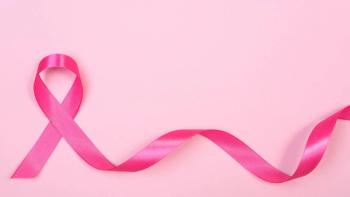
Why Transfusion Independence Matters for Patients With MDS
An expert explained the burden that red blood cell transfusions can place on patients with MDS.
Among patients with myelodysplastic syndromes (MDS), treatment with Reblozyl (luspatercept) resulted in at least 12 weeks of blood transfusion independence as well as a significant increase in hemoglobin, researchers have reported.
The phase 3 COMMANDS study enrolled 363 adult patients with MDS of very low risk, low risk or intermediate risk who had not been treated with erythropoiesis-stimulating agents (ESAs, medications that stimulate bone marrow to make more red blood cells) and were dependent on blood transfusions due to anemia and allocated them to treatment via Reblozyl (182 patients) or epoetin alfa (181 patients).
The study’s primary endpoint of red blood cell transfusion independence lasting at least 12 weeks and a mean hemoglobin increase of at least 1.5 grams per deciliter in weeks 1 to 24 was met by 60% of the Reblozyl group and 35% of the epoetin alfa group at median follow-ups of 17.2 months and 16.9 months, respectively.
According to the Leukemia and Lymphoma Society, 60% to 80% of patients with MDS will have anemia, or a low red blood cell count, at the time of their diagnosis, and up to 90% of patients will need at least one transfusion during their illness. Red blood cell transfusions, the organization explains on its website, can improve blood cell counts or improve anemia symptoms including shortness of breath, dizziness, extreme fatigue and chest pain.
“[Reblozyl] represents a new standard of care for ESA-naive patients with transfusion-dependent, lower-risk myelodysplastic syndromes,” researchers wrote in a study presenting their findings in The Lancet Hematology.“Significantly more patients had red blood cell transfusion independence and hematological improvement with [Reblozyl] than with epoetin alfa, with benefits observed across patient subgroups.”
Study co-author Dr. Guillermo Garcia-Manero of the Department of Leukemia, Division of Cancer Medicine at The University of Texas MD Anderson Cancer Center in Houston, spoke with CURE® about the burden of red blood cell transfusion dependence, and why transfusion independence is such an important potential outcome for patients.
Transcription:
First of all, from a pharmacoeconomic perspective, these transfusions actually are not free, No. 1. Second, you have to sit in a chair for a few hours getting these units of blood, sometimes they are associated with a little bit of reaction. Sometimes they can, rarely, but they can be severe. You have to be pre-medicated for these transfusions, so some people may need some steroids, some Tylenol, some Benadryl so they can tolerate this. Before you get these transfusions, you need to have special lab work, where they type and cross or type and match you so they find the unit. So you're waiting, actually, for a little bit of time to find these units. You know, in place like MD Anderson, this can happen in the same day, or it always happens in the same day. But in some places that are not as dense or you are in a rural population, sometimes those products come one to two days after you are found to be in need of the transfusion.
So just the mechanics around these transfusions are actually quite significant. The cost is not insignificant. And for the patient, again, it means that you are sitting in a chair for a few hours when you get that. Basically, your day is gone, and you may not feel 100% well when getting them, after that. They're lifesaving. And if you feel better, your hemoglobin hopefully goes up. But with time, these transfusions actually, particularly in patients that need chronic transfusions and there are people actually that need them, sometimes once a week, sometimes more than once a week. Eventually, your body creates antibodies against them, and you start not responding as well as you were. So let's say, if you get a unit of blood and hemoglobin goes [up] one gram or two, then OK, you're OK for a little bit of time, but then eventually these responses are not that meaningful. So they are expensive. They are very safe in the United States, but still, you may have some little complication from them. Occasionally, this could be severe, and it's a major time commitment for patients, so not something that anybody would like to have.
For more news on cancer updates, research and education, don’t forget to




